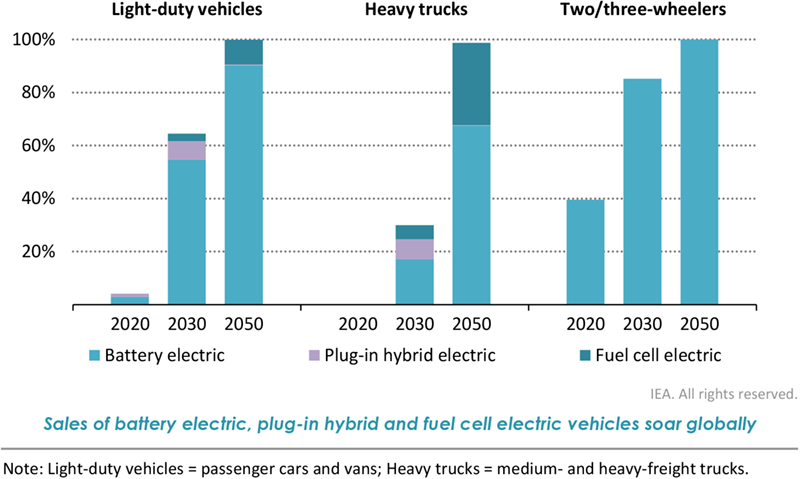IEA launches first comprehensive Net Zero energy roadmap

GFEI partner the IEA has launched new analysis that sets out government actions to rapidly reduce emissions by 2050. The Net Zero by 2050 report is the world’s first comprehensive study of how to transition to a net zero energy system by 2050 while ensuring stable and affordable energy supplies, providing universal energy access, and enabling robust economic growth.
The report sets more than 400 milestones to guide the global journey to net zero by 2050, including road transport. These include no new investment in fossil fuel supply projects, and no further final investment decisions for new unabated coal plants. On passenger vehicles, the roadmap includes no sales of new internal combustion engine passenger cars by 2035.
Policies that end sales of new internal combustion engine cars by 2035 and boost electrification underpin the massive reduction in transport emissions. Electric vehicles (EVs) go from around 5% of global car sales to more than 60% by 2030.
The impact on the overall efficiency of vehicles is seen in the 2030s, as the composition of the vehicle stock changes: electric cars make up 20% of all cars on the road in 2030 and 60% in 2040 (compared with 1% today). In 2050, cars on the road worldwide run on electricity or fuel cells.
The scenario includes a range of other policies for road transport – including upper speed limits, which are modeled as reducing over time from their current levels to 100 km/h, cutting emissions from road vehicles by 3% in 2050. It also includes behavioural changes, such as new taxes to reduce travel demand, or information and awareness measures to facilitate a switch to walking, cycling and public transport.
By 2050, despite a world economy more than twice as big and a population with 2 billion more people, these changes would mean global energy demand around 8% smaller than today. In the scenario, almost 90% of electricity generation comes from renewable sources, with wind and solar PV together accounting for almost 70%. Solar is the world’s single largest source of total energy supply, with fossil fuels falling from almost four-fifths of total energy supply today to slightly over one-fifth.
The report makes it clear that climate pledges by governments to date are not sufficient. Even if fully achieved, current policies would fall well short of what is required to bring global energy-related carbon dioxide (CO2) emissions to net zero by 2050 to give the world an even chance of limiting the global temperature rise to 1.5 °C. The new Net Zero pathway is part of a growing momentum for ramping up government action ahead of COP26.
